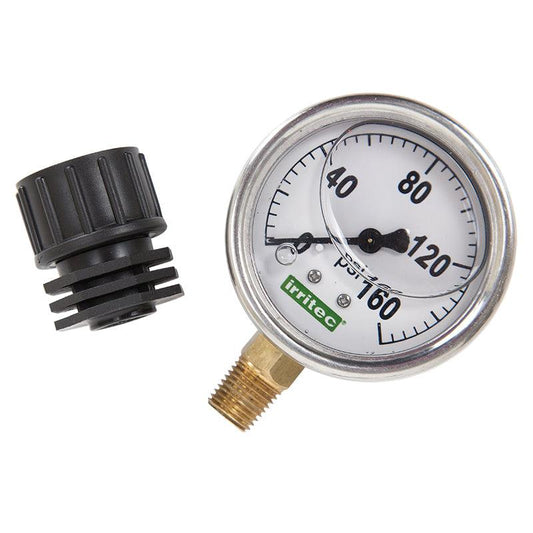Introduction
Drip irrigation is an excellent way to conserve water and ensure your plants get the hydration they need. Before starting your irrigation system, it’s essential to measure your water pressure and flow. Follow these steps to accurately determine these two critical factors.
What Is Water Pressure?
Water pressure measures the force exerted by water on your tubing, fittings, and emitters. Drip systems typically require a pressure range of 25-30 PSI (pounds per square inch). High water pressure can lead to popped emitters or overwatering, while low pressure may result in insufficient water distribution.
How to Measure Water Pressure
- Turn off all water sources connected to the same supply as the spigot you’ll be testing.
- Attach a pressure gauge to the spigot you plan to use for your drip system.
- Turn on the spigot (not fully open) and read the gauge to get the water pressure measurement.
If your pressure exceeds 30 PSI, consider installing a pressure regulator to maintain proper system performance. Explore our drip irrigation supplies for pressure regulators and more.
How to Measure Water Flow
Water flow is the amount of water your system can deliver in a set time, measured in gallons per hour (GPH) or gallons per minute (GPM). Here’s how to measure it:
- Use a 5-gallon bucket and mark the water line for 5 gallons (if not pre-marked).
- Turn on the spigot and fill the bucket to the 5-gallon mark while timing with a stopwatch.
- Use this formula to calculate your flow:
- GPM = (5 gallons ÷ time in seconds) × 60
- GPH = GPM × 60
For example, if it takes 40 seconds to fill the bucket, the GPM is 7.5, and the GPH is 450. This flow rate supports multiple 1/2" poly tubing lines in a drip system.
Importance of Pressure and Flow
Knowing your water pressure and flow ensures you select the right emitters and avoid system inefficiencies. Drip emitters are rated in gallons per hour, depending on the pressure. Proper pressure and flow calculations help you determine how many emitters your system can handle.
For example, with a flow rate of 450 GPH, you can use 400 1/2 GPH emitters per line at the correct pressure.
Additional Resources
Check out our video Drip Irrigation – Save Water for more tips on designing and maintaining your drip irrigation system.
Save water, ensure efficient watering, and grow organic for life!


